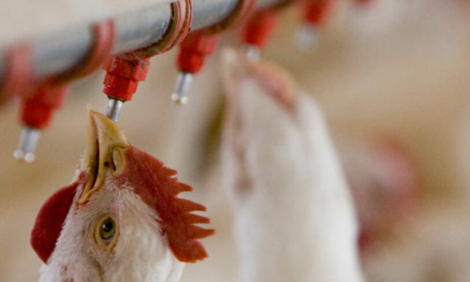



Top six tips for chicken food safety
Chicken tartare, carpaccio or sashimi, anyone? No!1. DON’T wash raw chicken before cooking it
Raw chicken meat doesn’t need to be washed before cooking but, more importantly, it shouldn’t be washed! Washing raw chicken risks splashing chicken juices and any accompanying bacteria around the kitchen onto benches, prepared foods and utensils etc. Modern chicken processing conditions and practices ensure that raw chicken meat reaches your home with as little bacteria on it as possible, but there can still be some bacteria present. Washing chicken creates an opportunity for cross-contamination within the kitchen and cross-contamination is a big contributor to foodborne illness. It is important to ensure that any items that come into contact with raw foods get washed …especially hands
2. DO cook chicken thoroughly
Always! Cooking chicken thoroughly easily kills the bacteria of concern in a food safety context that can potentially be associated with chicken. To check, if you have a food thermometer, it should reach at least 75°C when inserted to the deepest (thickest) part of the meat; if you don’t have a food thermometer, the juices should run clear (not pink) when you pierce the meat with a fork or skewer to the thickest part of the meat and the colour of the meat should be consistently white when cut in half at the thickest point.
3. DON’T defrost frozen chicken on the bench
Never! Raw chicken meat should always be thawed below 5°C, which usually means in the fridge, or by using a microwave. The microwave is fastest but can damage the quality of the chicken if you’re not careful so often the easiest way is to defrost gradually overnight in the fridge because this maintains the safety and quality of the meat. To prevent cross-contamination with other foods in the fridge, put the meat in a container which prevents juices dripping on other food items and/or put it on the bottom shelf.
4. DO wash your hands…boards, hands, knives, containers…
While the risk from chicken meat itself is gone after cooking (assuming it’s thoroughly cooked and consumed or refrigerated within 2 hours), cross-contamination from whatever came in contact with the raw meat before it was cooked still exists. So things like knives, chopping boards and particularly hands and anything they’ve touched such as towels, can still have bacteria from the raw meat present on them. It’s easy to see how the bacteria can be transferred from these things to foods that are consumed raw (like salads) or food that’s already been cooked, and because there is no additional cooking step to kill the bacteria the food gets eaten along with any cross-contaminating bacteria! So either have utensils and boards specifically for raw meat or clean them immediately after use for raw meat and before use on anything else. But always wash your hands!
5. DON’T let raw chicken meat come in contact with other foods in the fridge
Cross-contamination is possible not just during preparation in the kitchen, it can occur during food storage too. Always separate raw chicken and other foods in the fridge so raw chicken juices cannot drip or spill onto or in any other way come in contact with other foods.
6. It’s OK to refreeze defrosted chicken
YES, it is! It is safe to put defrosted chicken back into the freezer, but, only if the chicken was defrosted as described in 3 above and wasn’t ‘defrosting’ for longer than 24 hours at this temperature. The myth that it is not safe to re-freeze chicken meat that has been defrosted arises from confusing two issues: quality and safety. While it is safe to put chicken that has been defrosted below 5°C back into the freezer, freezing and re-freezing chicken may result in a deterioration in the quality (taste and texture) of the meat.
More helpful advice for safe handling and cooking of chicken








